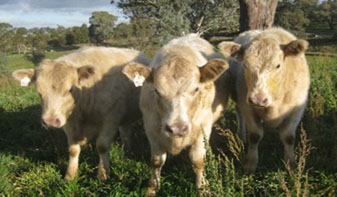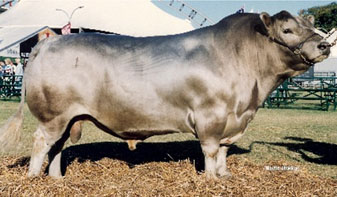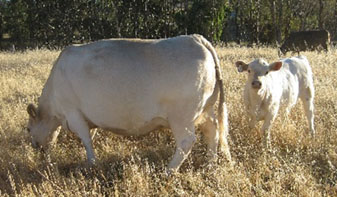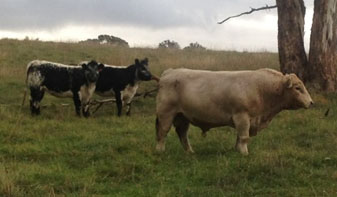Breeding Square Meaters
As purebreds or as part of a crossbreeding program Square Meaters offer opportunities for improving herd performance. There are two forms of breeding; straight breeding (purebred) and cross breeding. (Cross breeding has multiple levels of breeding that can be undertaken.)
The selection of the appropriate program relates to issues including;
- Size of herd
- Size of property and availability of paddocks
- Commercial objectives
No matter which breeding program that might be pursued the basic principles and objectives remain the same.
Straight Breeding
Continuous improvement of a herd’s performance is the principle aim of any purebred breeding programme. Increasing the efficiency of production and the quality of the end product in terms of customer satisfaction are fundamental objectives to be pursued.
Genetic selection is the principle method of improving breed traits to fulfil the fundamental objectives.
The benefits of straight (purebred) breeding are that it potentially provides
- Animals for finishing
- Sires for the further development of the breed (Only structurally sound Bulls with exemplary true to type characteristics should be maintained)
- Replacement females (Only superior quality females should be selected as replacement females for the herd.)



For a breed to be able to fulfil the market specifications for a finished animal and meet the needs for replacement females requires the traits of the herd to be well balanced. Constant monitoring of a herd’s development is a necessity to ensure that balance is maintained as continued herd improvement is pursued.
The establishment of the Square Meaters Breed was initiated by Ric Pisaturo in response to a need for a specific type of animal to meet customer needs. Square Meaters as a breed not only needed to meet those customer demands but also needed to be able to provide replacement females. The balance of traits sought by Mr Pisaturo are reflected in his statement below.
In 1993 I decided that only through selection with the Murray Grey I could produce the carcase the local market wanted. I developed the Square Meaters with traits that included:
- Compact size for more beef per hectare
- Superior muscling providing high yielding carcass with excellent commercial appeal
- Early maturing reaching domestic, restaurant and butcher trade weights at 9-13 months off grass
- Efficient feed conversion enabling higher stocking rates
- Highly fertile calving at 2 years of age with shorter joining period
- Optimal milk production, higher weaning weights
- Excellent temperament equals low stress handling and tender meat
Cross Breeding
It is a commonly held view, within the cattle industry, that cross breeding improves the performance of beef cattle, however to obtain the full benefits of cross breeding it must be planned and done properly. There are two benefits offered by cross breeding:
- Heterosis (Hybrid Vigour)
- Complementarity
Heterosis/ Hybrid Vigour
When the performance of the progeny of a cross breeding program is greater than the performance of the pure bred parents, the difference is called heterosis or hybrid vigour.
The achievement of heterosis comes at no additional cost to the establishment of cross breeding program. The object of any cross breeding program should be to optimise heterosis.
Complementarity
Cross breeding allows for the opportunity to join breeds to establish a breed mix that is more ideal for an environment or a market than any of the parents would be.
A cross breeding plan would mix breeds that complement each other, that is the strong points of one breed may offset the weaker characteristics of another, resulting in a complete problem free cattle.
The basis of any cross breeding program is to deliver significant improvement in progeny so that they provide improved returns to the breeder.
There are significant benefits in breeders utilising a Square Meaters sire in a commercial cross breeding program. An appropriately selected sire can deliver the following traits:
- Low birth weight calves with substantial early growth
- Polled progeny
- Heavy muscling and even fat cover
- Early maturity – progeny being able to meet the domestic market specification at an earlier age.
There are numerous examples of commercial breeders using Square Meaters bulls to enhance their profitability by producing weaner and yearling calves that meet the market specifications of the Australian beef industry.
A large number of breeders have found that using a Square Meaters bulls over heifers, because of the characteristic low birth weight of calves and the subsequent reduction in the need for assisted calving, has assisted their herd management. The ability to calve down heifers easily has assisted in the process of getting them back in calf again quickly.
Breeders Ken Drane and Carol Bartley acknowledged the benefits of a Square Meaters sire over Shorthorns (OTS 2007). They experienced a zero need for assisted caving and growth that delivered good results in both carcass and feedlot competitions.

Breeders Ken Drane and Carol Bartley acknowledged the benefits of a Square Meaters sire over Shorthorns (OTS 2007). They experienced a zero need for assisted caving and growth that delivered good results in both carcass and feedlot competitions.

A Queensland breeder has successfully used Square Meaters bulls over Brahmans with the results being that the first generation progeny was free of horns, had an excellent temperament, great length and plenty of muscle.

Other cross breeding programs that have produced successful results include Square Meaters sires over Angus, Hereford, Speckle Park and Limousin females.
References
Reproduction and Breeding – Cross Breeding Systems for Beef Cattle
Pete Anderson, University of Minnesota Beef Team
NSW DPI primefacts – Primefact 624, May 2007
Bill Hoffman Livestock Officer (Beef Products), Casino
